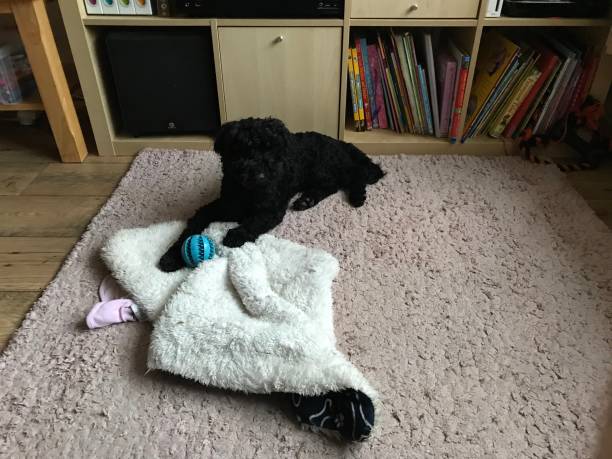All fun and games until the oriental rug in your den is stained with pet urine.
The most common rug disaster is pet urine. These stains can be permanent. If the field is busy, this might be fine.
The smell is a problem, however, and the longer urine remains in the rug’s fibers, the more damage it will do to the carpet.
This month, the most common topic that cleaners asked me about in their “HELPME!” emails was how to remove pet urine smell from rugs. *
This is my opinion based on the experience I gained from working with our company and the students I’ve taught. Please don’t take my words as gospel; these are just educated suggestions because each rug and situation will differ. This advice does not replace getting real-world experience and training to improve your skills. Please, for goodness sake, test everything first. Before cleaning, every rug must be thoroughly pre-inspected, fiber-tested, dye colorfast-tested, and thoroughly inspected. Always. Let’s talk about pet puddles.
Pet accidents happen. What now?
Let’s not forget the professional cleaners.
PET URINE ODOR REMOVAL FROM RUGS
Remove the Source (Woven Rugs).
The urine must be removed from the middle of the rug.
Wool knots are wrapped around cotton warps, wefts, and foundation fibers to create woven rugs.
Cotton is known to be absorbent. Cotton towels are used to clean things because they absorb moisture.
When warm urine from a pet hits a carpet, it is suspended (because wool repels moisture naturally) for a few seconds. Then it penetrates the wool fibers before being pulled into cotton fibers.
When you see a urine smudge on a carpet, you only see the tip of the problem. You are only seeing a small amount of urine.
You will have to wash out the source of odor in the rugs. Surface cleaning an oriental rug using a portable or truck-mount machine will not remove odor-causing elements. This is not possible. It will only worsen if you try to cover your unfinished work with a strong fragrance deodorizer. This is like spraying Lysol into a Porta-Potty… floral smelling sewage ain’t going to do.
You will need to properly clean rugs in your facility if you want to be a professional rug cleaner.
Washing the rug is the most effective way to remove odor-causing contaminants.
You can tell a rug is “woven” because the pattern on the back is the same as the front.
You should be extra careful if you’re not used to cleaning rugs. This is because pet urine can create several hazards for rug cleaners.
Pet Urine on Woven Rugs: Dangers
There are three other major dangers that rug cleaners should be aware of.
STAINS
The stains left by pet urine are usually permanent, particularly if the stains have been present for a long time. You can use chemical stain removers to try and remove the yellow area staining. However, this will cause damage to the fabric fibers.
It is often best to tell them they will likely have to wash the rug and remove the urine to eliminate the smell.
It’s a good thing if the stain improves after washing. You shouldn’t guarantee anything other than that you’ll do your best. This is especially true if the rug owner has already tried several “miracle stain removers” available over the counter before bringing it to you. In their panic, they may have made the stain worse.
You can guarantee anything you want if you have the skill to remove wool stains. Over the years, I’ve found that when you say “no problem,” you jinx the job. And sometimes, when you try to dismiss the job, the stain comes out great.
It’s better to be realistic when dealing with pet urine, vomit, or feces.
Dye Bleed and Color Loss
Even colorfast dyes in a silk or wool rug can bleed over time when exposed to pet urine. I’ve seen rugs with dyes that wouldn’t “bleed” if submerged in water for days (like an American Sarouk rug from the 1920s, which had iron-clad colors) bleed after being exposed to pet urine.
Pet urine stains become alkaline over time. Alkalinity can damage acid dyes in rugs. When wet, these areas may release or bleed color despite the stabilizing solution you used.
The same alkalinity issue causes dye bleeding for carpet cleaners on location who use carpet cleaning solutions and machines (which are alkaline because they were designed for synthetic wall-to-wall carpeting) when using natural fiber rugs. This mixture often leads to disasters.
Even if the dyes of your rug are colorfast and you have tested them, there is still a high probability that those areas with old urine stains will bleed. You should expect it and tell your client that even though you have taken all necessary precautions, the dye damage is already there.
The color may disappear and be replaced by yellow urea when the urine has been exposed for a long time.

